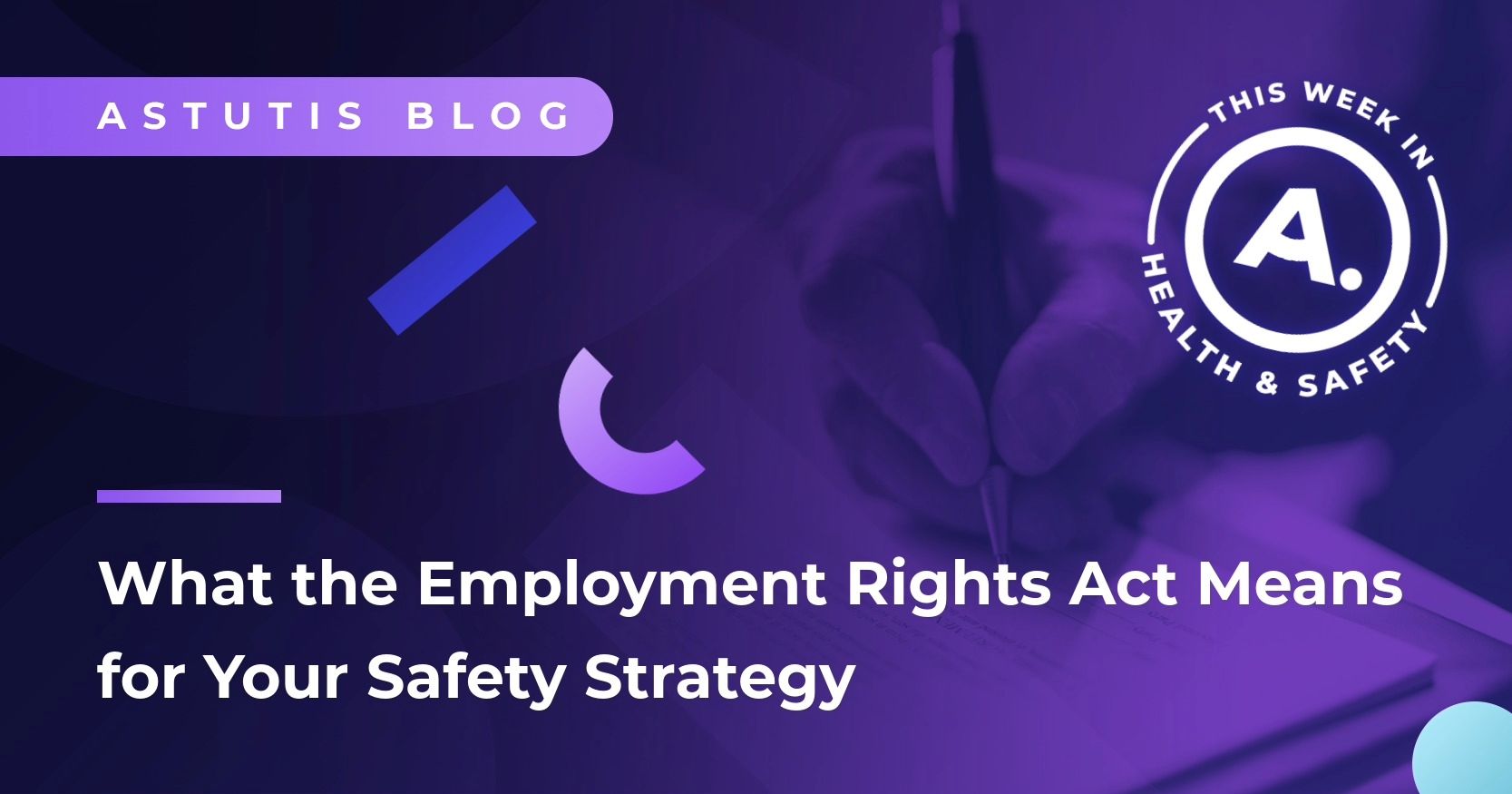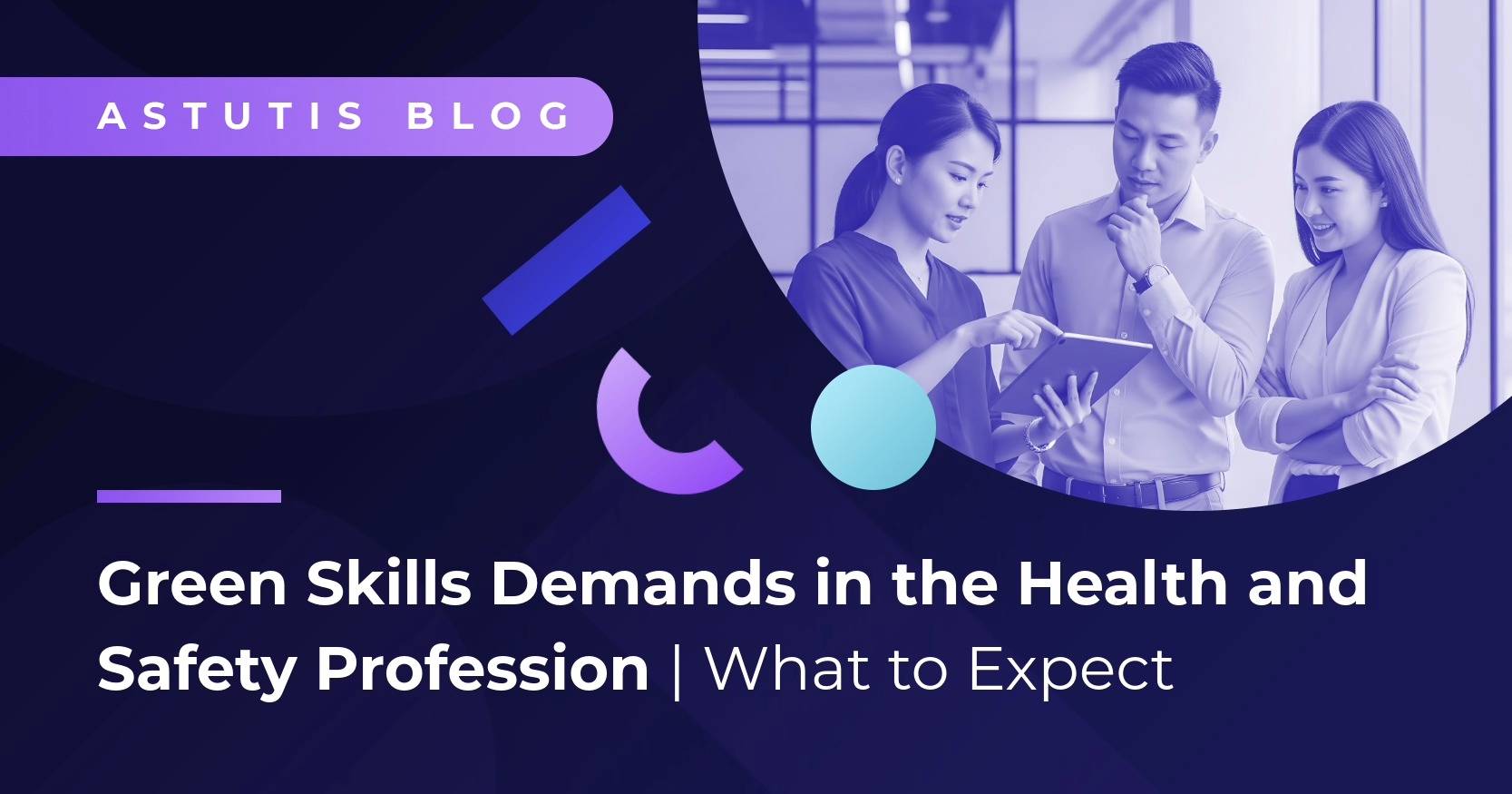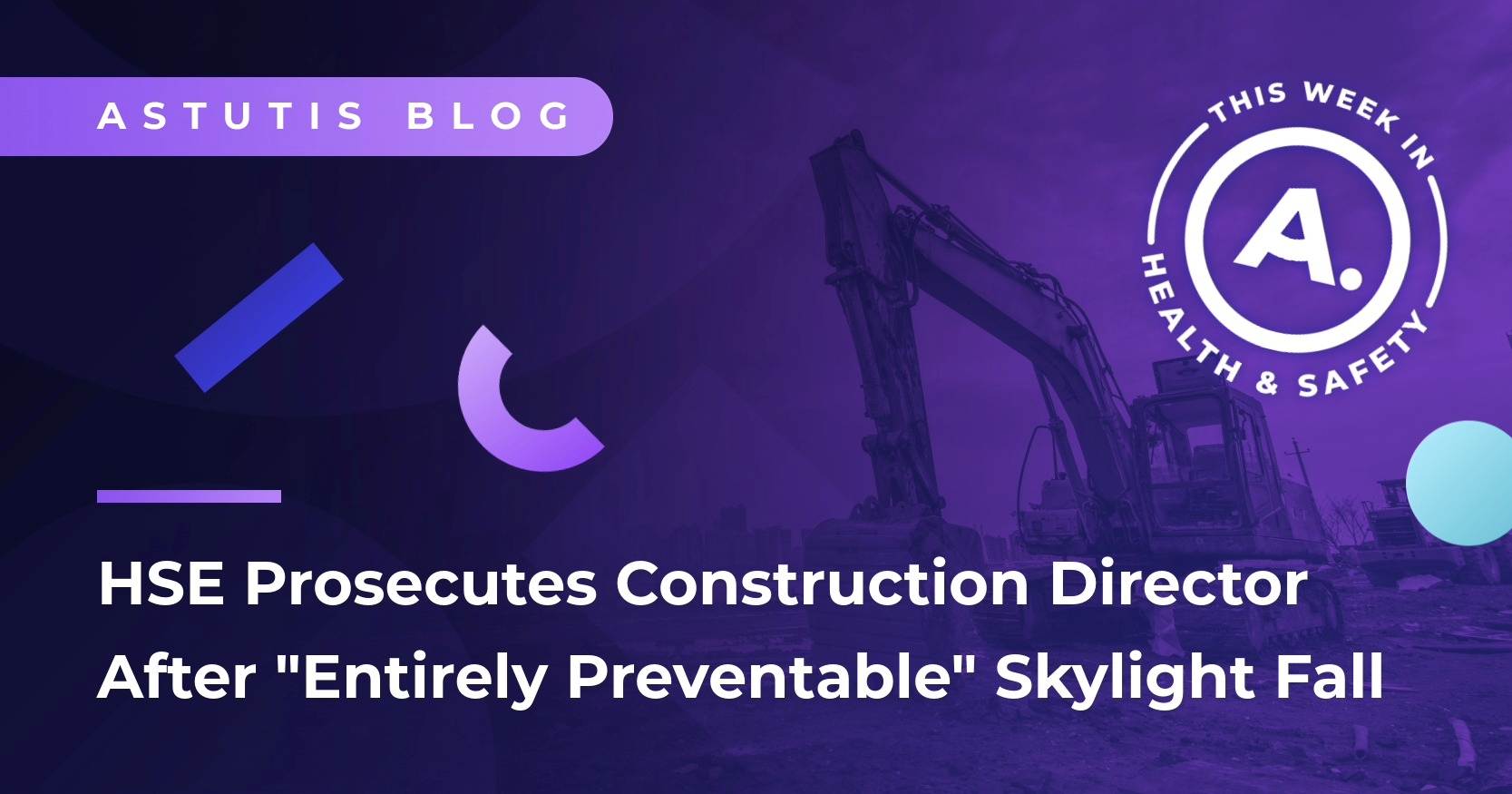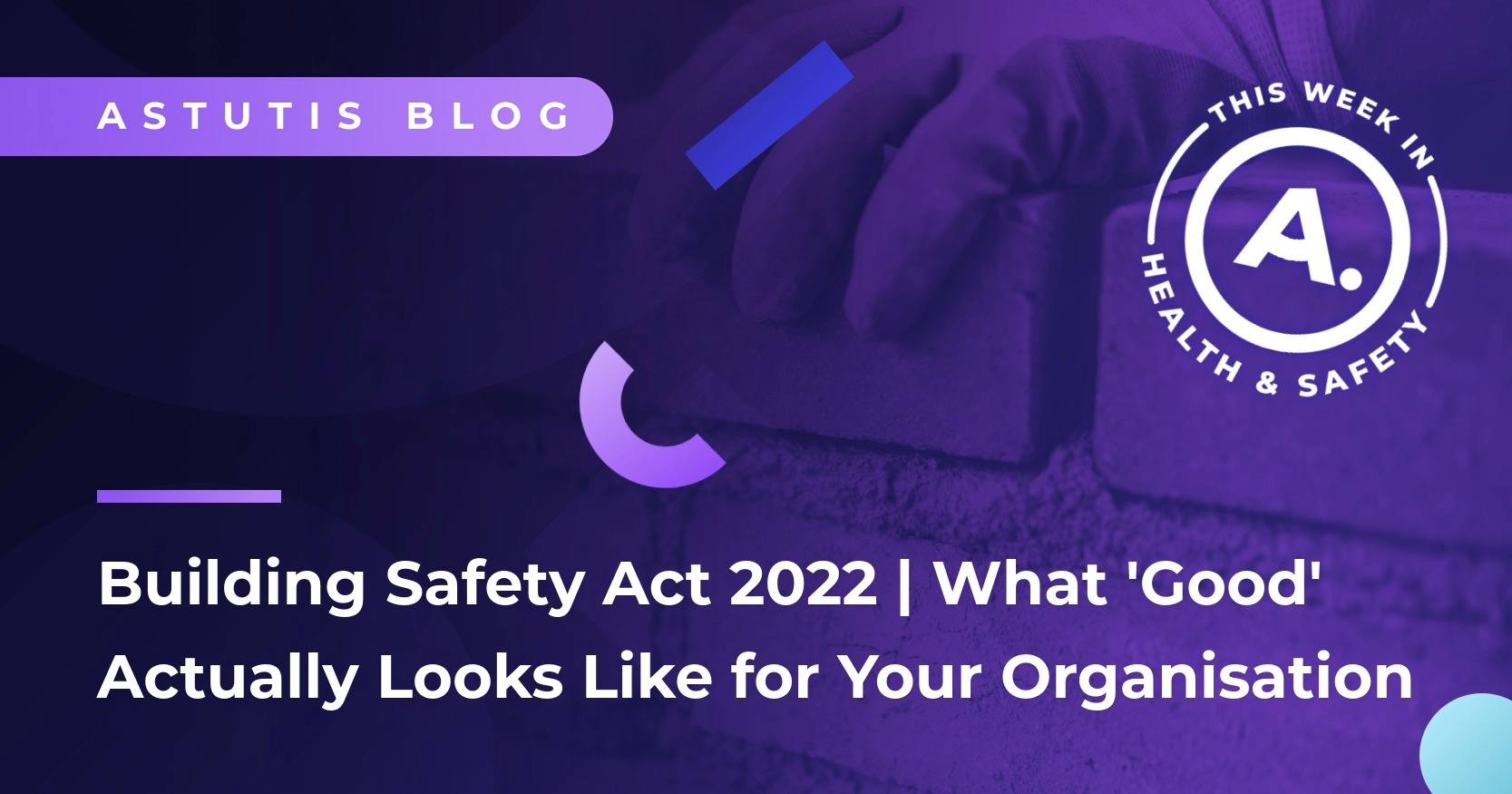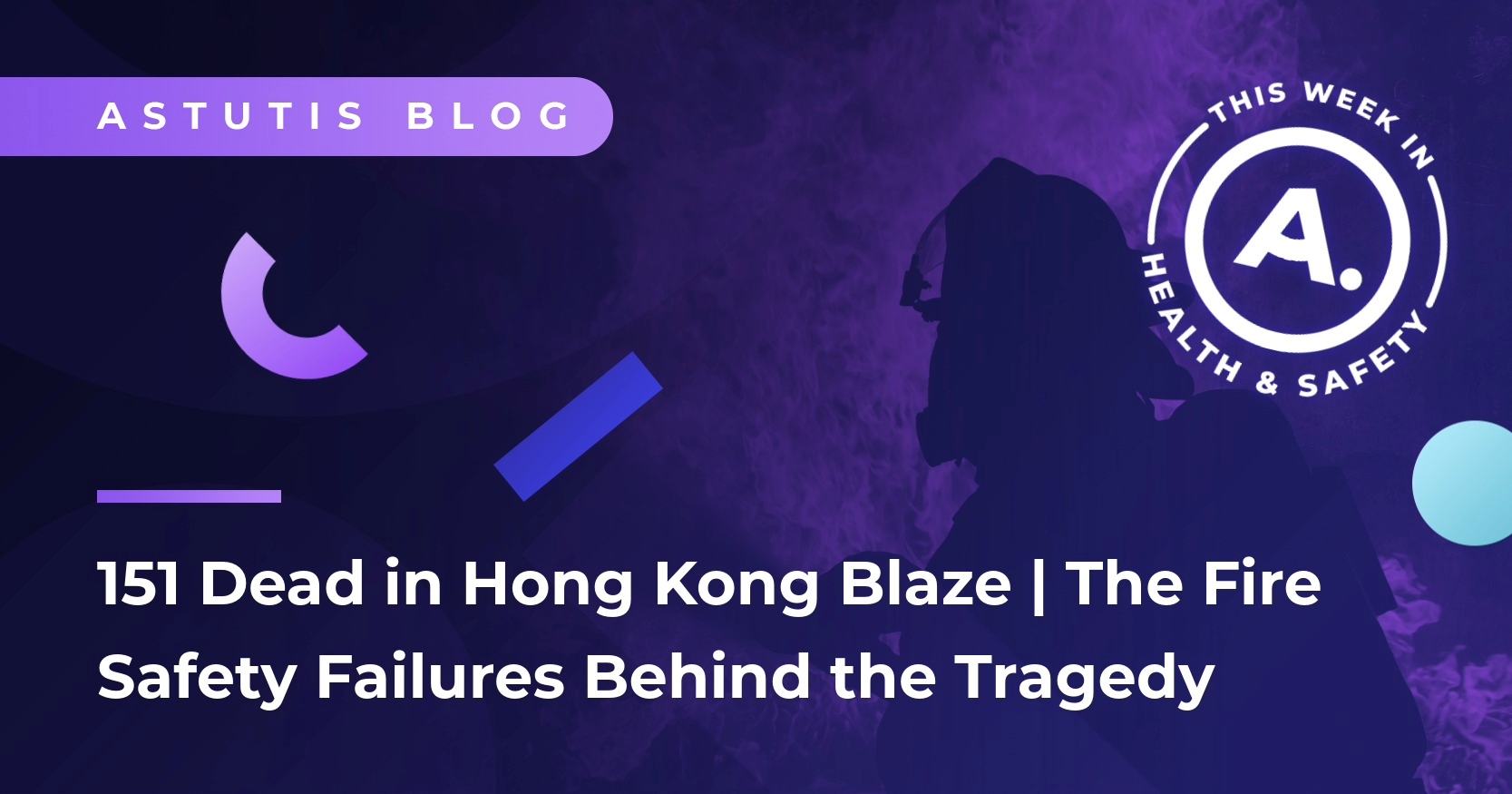Unit NCC2: Construction Health and Safety Practical Application Part 2 – The Management Report
Prepare for the NCC2 Unit in Construction Health and Safety with this guide towards building your report.
In Part 2 of this guide to the NCC2 practical, I will be looking at the ‘Report to Management’, practical element of the moderation.
Having previously discussed the need to start the process early and the specific content of the safety inspection, we will now have a look at what might usefully be included in the report to management - from an examiners viewpoint.
If you haven't already read part 1 of this blog click here.
‘Examiners are looking for a report that persuasively urges management to take appropriate action, explaining why such action is needed (including reference to possible breaches of legislation) and identifying, with due consideration of reasonable practicability, the control measures that should be implemented.’
Breaking this requirement down, we find several issues that are worthy of further exploration:
- Quality of content – what observations / actions might be appropriate (and therefore should be included)?
- Breaches of legislation – which legislation might be effectively cited (and therefore should be included)?
- Persuasive arguments – what arguments might you use to convince managers to act?
- Reasonably practicable – how might this ‘qualified statutory duty’ be considered in respect of ‘control measures’?
It should be remembered that NCC2 is a practical examination which covers the full NGC1 AND NCC1 syllabus. This means that several topics from NGC1, especially Element 1 (Foundations in health and safety), will be directly relevant to the report to management, as well as the full NCC1 syllabus. Specifically, the practical application of NCC1 Element 1 (Construction law and management) is very important.
Quality matters
Examiners are specifically looking at the quality of the interpretation of the inspection findings, and can award up to 15 marks accordingly.
Reports that score highly in this respect show a logical progression from the observation sheets and discuss the majority of key issues identified. In selecting the observations to be included in the report, a useful approach is to group similar findings together.
For example, it may be that several working at height hazards have been observed, or issues surrounding the use of work equipment appear as a common theme. By grouping items together and using sub-headings in the report, such as ‘Work at Height’ or ‘Work Equipment’, the chances of getting high marks for an appropriate structure, a logical progression from the observation sheets, and ease of reading and understanding can be improved.
Reports that score low marks for quality commonly contain a simple duplication of the observation sheets, or introduce issues that were not covered in the observation sheets!
Breaking the law
With 5 points on offer here, examiners are looking for candidates to cite a minimum of five breaches of health and safety law.
All construction hazards are controlled via the requirements at CDM 2015 Part 4 or specifically through their own regulations such as the Work at Height Regulations 2005 (WAH) or the Control of Noise at Work Regulations 2005 (CNWR).
Clearly, infringements of construction health and safety law is what is required, however, many candidates simply fail to appreciate the nature of NCC2 and only mention general health and safety law such as the Health and Safety at Work etc. Act 1974 (HASAWA). Note: full legal titles should be given on first use and then may be subsequently abbreviated.
In the report, therefore, you must refer to ‘relevant’ legislation that is applicable to your site and the hazards that you have outlined during your inspection.
Importantly, you must show a clear understanding of the reasons for the breach. For example, CDM 2015 Part 4 (Regulation 18: Good order and site security) may be being breached if the site boundary is not secure or clearly identified where necessary in the interests of health and safety.
Mention of the relevant CDM duty holder may also add weight or persuasive argument to your report.
Do you like a good argument?
Well, the examiners do! In fact, examiners prefer clear legal, moral and financial arguments, and they can award up to 10 points accordingly in the main body of the report (for persuasiveness/conciseness/technical content).
Issues requiring urgent actions should always be included here – urgency being an expression of risk (likelihood and severity) in this context. Arguments to explain the urgency are commonly discussed as the ‘drivers’ for health and safety – try to be ‘specific’ when discussing these – and always draw particular attention to those issues that could incur a high cost in terms of finance, inconvenience or time.
The possible costs of not taking action must be included, for example, both criminal and civil legal costs, and the costs associated with accidents. For example, Fees for Intervention (FFI) can represent significant added costs to projects where they are incurred for material breaches of health and safety law (currently at £129 per hour).
The costs of accidents are typically expressed as financial (direct costs such as cleaning up etc) and opportunity (indirect costs such as damage to reputation etc). As there are usually two sides to an argument, don’t forget to highlight any financial benefits such as quality improvements, time savings, or environmental benefits.
In control
As fundamental statutory duty, ‘reasonably practicable’ requires that the cost of controlling risks may be balanced against the amount of reduction in risk that might be achieved (the benefits). If there is a ‘gross disproportion’ between the costs and the benefits, those costs do not have to be incurred and the duty is discharged. Clearly, this can be a complex calculation and judgement to make and may require several inputs, which, for the purposes of your report, may not be available to you.
Your report, therefore, does not require extensive discussion or calculations of what is or isn’t reasonably practicable. What is required, is that your report, particularly in the main body and recommendations sections, contains evidence that you have considered ‘reasonably practicable’.
Together, the conclusions and recommendations sections are worth 30 marks. This means that they should be given appropriate attention and not simply treated as an afterthought.
Your conclusions (worth 15 marks) must persuade management to act via a concise summary of the main body findings. Care must be taken not to introduce anything new or that which has not been previously mentioned in the main body of the report – doing so will attract low marks!
In your recommendations (worth 15 marks), examiners are looking for you to show that you understand the duty to provide, for example, construction places of work that are safe ‘so far as is reasonably practicable’.
To do this, you should provide relevant examples of the potential costs incurred and benefits that might be accrued for the control measures that you stipulate.
Whilst you are not expected to either know or estimate actual costs, you should demonstrate your awareness of cost implications, balanced against the amount of risk reduction and priority.
For example, high cost recommendations that will only provide a very small amount of risk reduction should be avoided.
Using the required tabular format for your recommendations, examples of reasonably practicable controls might be:
| Recommendation | Likely resource implications | Priority | Target date |
| Secure the boundary fence adjacent to children’s playground | x3 operatives for one hour | High | Within one day |
| Give a tool box talk on falls from vehicles | Site supervisor and all operatives for 30 minutes | Medium | Within one week |
| Repair the minor potholes in the site haul road | x2 operatives for one hour | Low | Within two weeks |
Your recommendations must be given in priority order. This means that the highest risks should be addressed first, together with those that can be dealt with immediately and at little cost.
Is that it?
Well, nearly. The introduction and executive summary together are worth 10 marks. Here, the examiner is looking for an introduction (worth 5 marks) that provides an overview of your chosen area, starting with the details of your inspection, when and where it took place, and a clear description of the area and what construction work is going on. The location, proximity to other structures etc, size, general layout, number of operatives, work patterns (shifts etc), stage of construction, may all be useful in developing a ‘word picture’ for the examiner.
The executive summary (worth 5 marks) is written last but inserted at the beginning (after the introduction). Here, the examiner is looking for a concise overview of the important points and main conclusions/recommendations. You must provide sufficient information to enable a busy manager to want to (or need to) read your full report. This is not an easy thing to do.
For example, if you begin your executive summary with a statement such as ‘everything was ok on the day of the inspection’, a busy manager might very quickly decide that it is not worth reading the rest of your report. In that case, all your time and effort may well have been wasted!
Your executive summary must also convince or persuade the busy manager that your recommendations should be implemented. Here, you should take care not to introduce anything new into the executive summary – remember that you will have already made the case for implementation in the main body of your report.
Further help
In this, the second of 2 blog posts, we have focused on the report to management, from an examiners viewpoint. If you do require help, you may consult any reference material (e.g. HSG150 or L153) when preparing your report, however, copying text word-for-word from reference material may be regarded as malpractice.
Your report is expected to be about 1,000 words in length and must not contain photos, sketches etc. So, based on the marking scheme (70 marks) and report template, this might approximate (but is not mandatory) to:
- Introduction: 80 words
- Executive Summary: 80 words
- Main Body: 420 words
- Conclusions: 210 words
- Recommendations: 210 words
Please remember that examiners will award marks for clear, accurate information, and not for unsupported generalities.
Related Blogs

Real Life Stories




